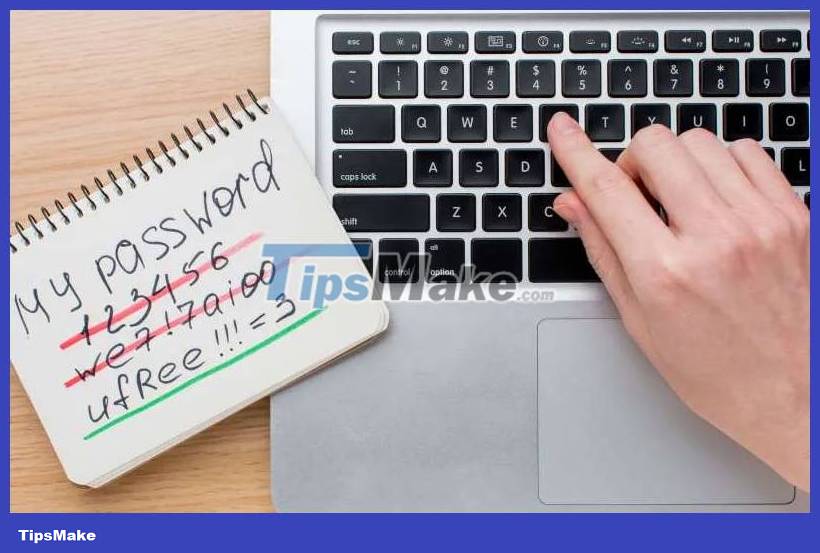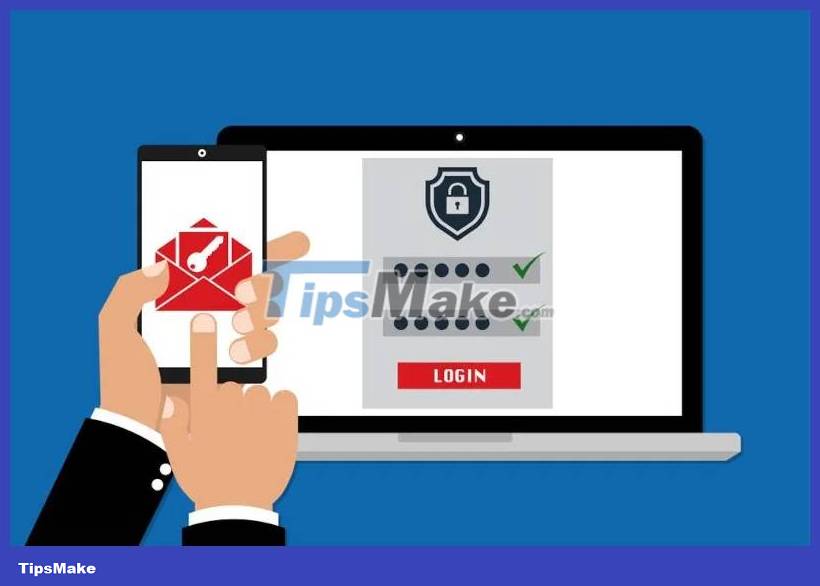How do password cracking tools work? How do you protect yourself?
If you think your password is secure, you might want to think again. Password crackers are getting smarter and faster, and what you think is a strong password can be hacked in a matter of minutes. The truth is that your password may not be as secure as you think. But don't panic. There are several effective ways to bypass these password crackers and better protect your account. This guide shows how password cracking software works, common mistakes people make that put their passwords at risk, and strategies for creating and managing strong, secure passwords.
Methods used by hackers to crack passwords
Hackers use several common methods to crack passwords. The easiest way is to use brute force techniques, in which they use automated software to guess every possible combination of letters, numbers and symbols until they get in. This works best with short, simple passwords.
For hackers who have your personal information such as date of birth, phone number, address, etc., they will use this information to guess your password, such as:
- Name combinations (e.g. james brown, j brown, brownj, brown, etc.)
- Hobbies (e.g. books, movies, celebrities, athletes, songs, cars, etc.)
- Important years or numbers (e.g. james brown1, j brown1, brown1991, etc.)
Another method is the Dictionary Attack, in which hackers use dictionary words to guess common passwords, like 'password' or '123456'.

Hackers can also install keylogger software on your PC to record your keystrokes and steal your real passwords. This often involves phishing emails in which hackers trick you into downloading and installing software.
Another commonly used method is to trick you into visiting a phishing website that asks you to submit a login form or reset your password. This website could be a fake banking website or look like a social media account. After you submit the form, your password will be recorded and saved in the hacker's database.
How to protect yourself against password cracking attacks
Although it seems that hackers are too cunning and you cannot avoid their evil schemes, you can protect yourself:
Use unique passwords
To keep your accounts secure, it's necessary to use a unique password for each account you have online. You should use a password manager if you have trouble remembering all your passwords.

Use strong and complex passwords
Password must be at least 12 characters long. Aim for 14 characters or more for important accounts. In fact, the more characters, the better.
Use a combination of letters, numbers, and symbols. The more variety, the better. For example, something like 'Tr0ub4dour&3' is better than 'password1234'.
Do not use personal information
Avoid names, dates of birth, addresses or other details that can be found on social networks or public profiles.
Use a mnemonic device or passphrase. A passphrase is a series of words or short phrases that are easy to remember but difficult to guess. For example, 'EatMoreTacosEveryDay' or 'KeepCalmAndCodeFor99Days'. Just make sure it's not an actual phrase that's already been used.

Turn on two-step verification
This feature adds another layer of protection to your account. In addition to passwords, you can use two-step verification, such as using an authenticator to generate an OTP, SMS to your phone, or email to your inbox. Because you're the only one who can confirm the notification, hackers can't access your account – even if they know your password. Follow these steps to set up two-factor authentication on different social networks.
Be cautious of phishing emails and malicious websites!
Phishing attempts are a common way for hackers to steal passwords and gain access to accounts. Never enter your password on any website, click on unwanted links or download attachments in any email unless you are 100% sure that it is legitimate.
You should read it
- Break hotspot password on iOS within 1 minute
- How to check password strength
- Test knowledge about hacking
- How to Open Password-Protected Excel Files
- 4 steps to set PDF password online
- Hacker cracked a password of 16 characters in less than 60 minutes
- Create passwords, software keys, programs on Windows using Program Blocker
- How to retrieve the simplest VnEdu password
May be interested
- How to secure PDF files with 2 locked layers
 to protect pdf files, users need to set pdf passwords with different support tools such as secret pdf.
to protect pdf files, users need to set pdf passwords with different support tools such as secret pdf. - How to Set Password for Folder and File in Windows
 you have some important documents in an important folder or file that you don't want others to see. the following article will show you how to encrypt or create a password to protect a folder or file to ensure that no one will be able to open it but you and the recipient.
you have some important documents in an important folder or file that you don't want others to see. the following article will show you how to encrypt or create a password to protect a folder or file to ensure that no one will be able to open it but you and the recipient. - 8 ways to protect simple digital personal information
 users can protect themselves by not saving the browsing information in the browser, always set a password for your mobile devices to prevent unnecessary instances of typing or activate the password feature. floor for some internet services.
users can protect themselves by not saving the browsing information in the browser, always set a password for your mobile devices to prevent unnecessary instances of typing or activate the password feature. floor for some internet services. - 7 free Windows password recovery tools
 the main function of the password recovery tool is to recover the passwords that users or administrators use when logging in to windows. these tools are often known as 'password stealing' tools because sometimes they are used by hackers to 'crack' user passwords.
the main function of the password recovery tool is to recover the passwords that users or administrators use when logging in to windows. these tools are often known as 'password stealing' tools because sometimes they are used by hackers to 'crack' user passwords. - 8 underused features of password managers
 password managers are more than just a handy place to store your login information. they come with a variety of additional features and tools to help protect your privacy and security across all your devices that you might have missed.
password managers are more than just a handy place to store your login information. they come with a variety of additional features and tools to help protect your privacy and security across all your devices that you might have missed. - How to Password Protect PDF Files
 today's tipsmake will show you how to lock a pdf document with a password to prevent others from opening the file without entering the correct password. there are several free online services to do this, or you can use the paid version of adobe acrobat pro (if available).
today's tipsmake will show you how to lock a pdf document with a password to prevent others from opening the file without entering the correct password. there are several free online services to do this, or you can use the paid version of adobe acrobat pro (if available). - Set BIOS and UEFI password to protect data on your Windows 10 computer safely
 on windows 10 operating system provides login password or account password to protect important data of users. however, the drawback of these features is that it can be easily bypassed without resorting to the support of the 3rd party application.
on windows 10 operating system provides login password or account password to protect important data of users. however, the drawback of these features is that it can be easily bypassed without resorting to the support of the 3rd party application. - The 5 best Microsoft Office file recovery tools
 protecting ms office documents with strong passwords is a great idea. however, it is a headache when i cannot remember the password to open them. this article will introduce you to the 5 best ms office file recovery tools.
protecting ms office documents with strong passwords is a great idea. however, it is a headache when i cannot remember the password to open them. this article will introduce you to the 5 best ms office file recovery tools. - How to Open Password-Protected Excel Files
 this article explains how to remove the password of a protected excel worksheet and how to crack the password of an encrypted excel file. in most cases, removing the password of a worksheet that is locked from editing in an excel file is quick and simple! however, if you need a password to open the file, the operation will be more complicated. there is no official way to decrypt excel files without using a password cracking program - often a resource-intensive process depending on the complexity of the password. you should still try it though!
this article explains how to remove the password of a protected excel worksheet and how to crack the password of an encrypted excel file. in most cases, removing the password of a worksheet that is locked from editing in an excel file is quick and simple! however, if you need a password to open the file, the operation will be more complicated. there is no official way to decrypt excel files without using a password cracking program - often a resource-intensive process depending on the complexity of the password. you should still try it though! - Set password, password protect USB data safely
 set password, password protect usb data securely with bitlocker or usb flash security software.
set password, password protect usb data securely with bitlocker or usb flash security software.










 How to fix AutoCAD lagging errors
How to fix AutoCAD lagging errors Difference between EATX and ATX motherboards
Difference between EATX and ATX motherboards Pros and cons of using cloud storage for remote work
Pros and cons of using cloud storage for remote work 6 reasons to avoid Intel's 14th generation CPU
6 reasons to avoid Intel's 14th generation CPU Differences between Apple M3, M3 Pro and M3 Max chips
Differences between Apple M3, M3 Pro and M3 Max chips How to scan for hardware changes on Windows
How to scan for hardware changes on Windows